Equipment
Getting Started in Cave Photography
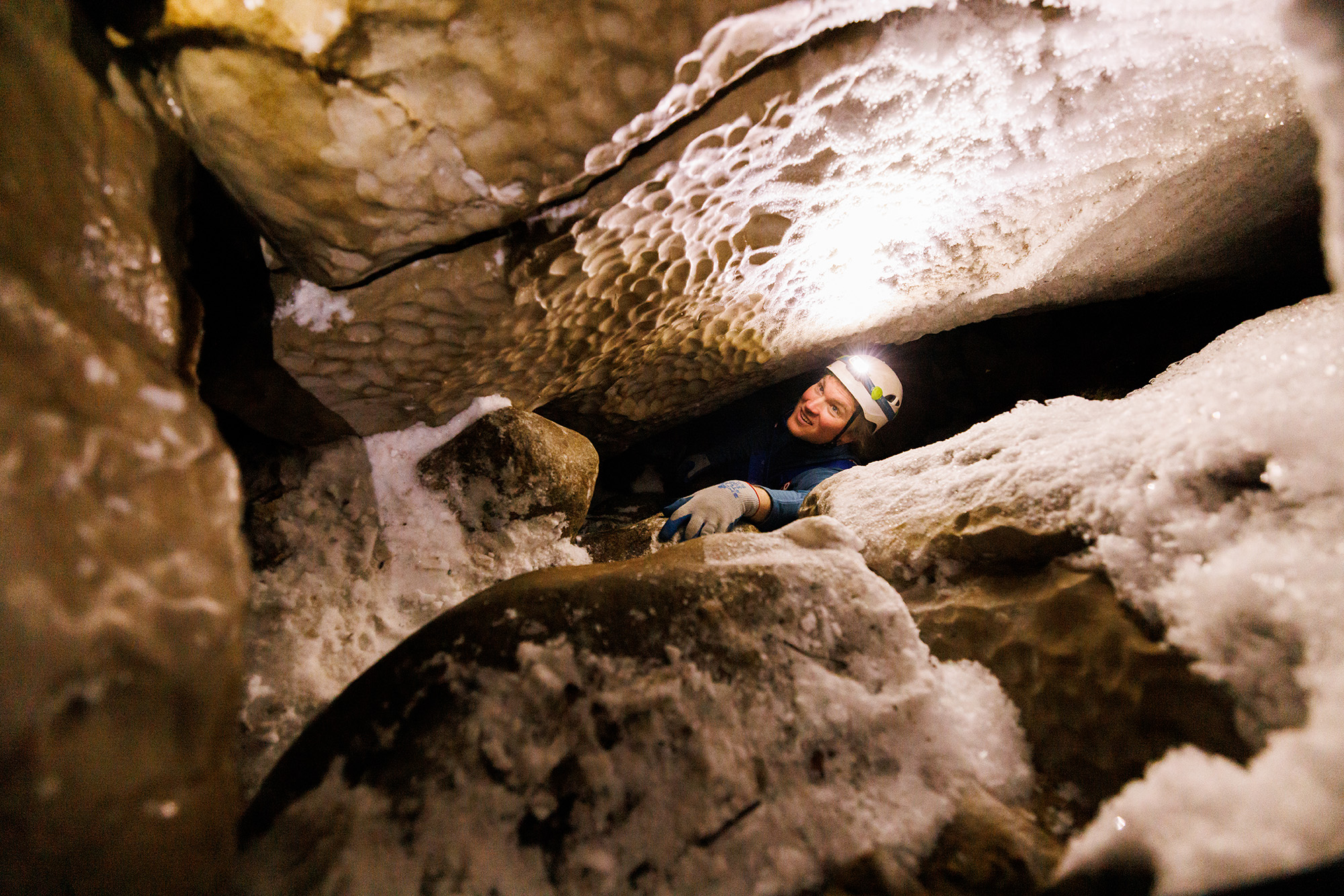
A few years ago, I got an email from an editor with the subject line “Caving next week?” It was an invitation to work on a caving assignment in Idaho and Wyoming. At the time, I was uncertain that caving was something I was interested in so I passed on the job.
Boy was I wrong! This year, I decided to give it a try. I’ve already been on three caving assignments since January and I am loving it.
Photographing in caves is so different from what I normally shoot. Most of my work as an adventure photographer is done during the day in the mountains – not in the dark underground. Additionally, there are no distractions in caves. It’s quiet, dark, and beautiful. The environment enables me to focus unlike any other environment I’ve photographed in. These unique features make cave photography particularly exciting.
All caves are different and each has its own unique set of challenges. Caves can be dry, humid, wet, hot, or frigid. The type of cave you go into greatly dictates what kind of gear you bring. Here are a few tips from what I learned on my caving assignments this year.
Preparation
Preparation is the first step in caving and the key to staying safe. If you forget extra batteries and run out of light in your headlamp, you could put yourself in a dangerous situation. It’s always better to be over-prepared than underprepared. Pack extra headlamp batteries, water, and snacks. Extra camera batteries, batteries for lighting equipment, a lens cloth, and other cleaners are essential. The night before I leave for a caving assignment, I always check to make sure my headlamp, batteries, lighting equipment, and camera are running properly. Once you are in the cave, you can only work with what you brought.
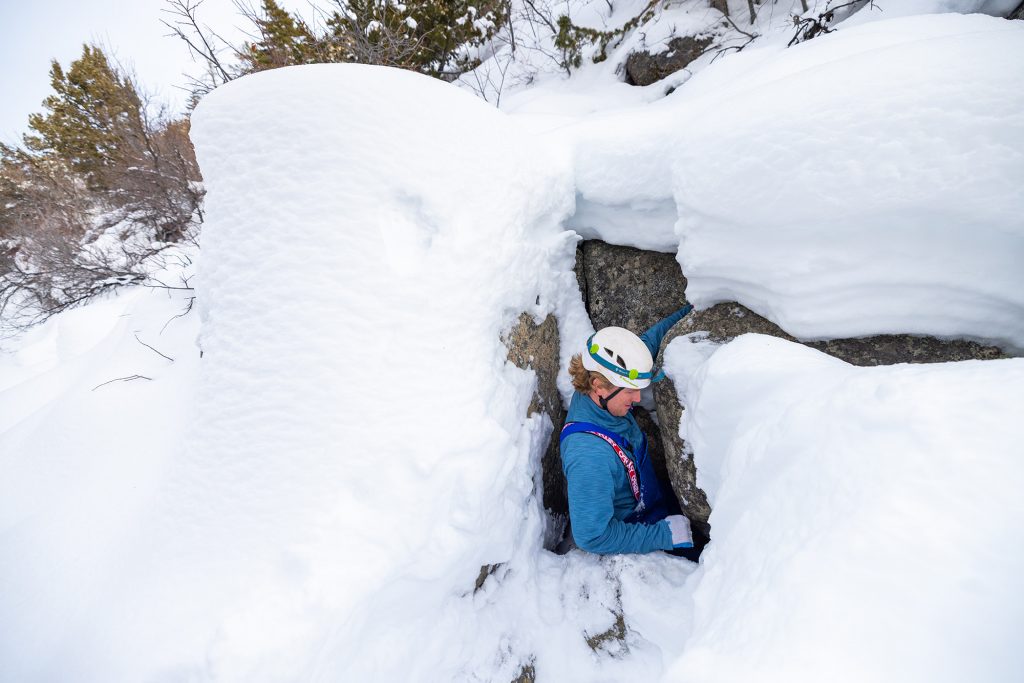
Know Your Lighting & Test in Advance
On my first caving assignment in January, I explored a cave in Sinks Canyon in Lander, Wyoming, for a tourism client. At first, I thought on-camera flashes would be the best way to light in caves. My first images with on-camera flashes were good, but they weren’t going to cut it for the client. They came out very flat. I quickly noticed off camera flashes or strobes are awesome because you can place them wherever you’d like making it easy to create shadows and show depth. I used the Canon Speedlite 600EX II-RT. With off-camera lighting, I created backlit images, bounced light off cave features, and had more control over the light.
I like to place my flashes so they light the cave from the back to the front. It creates interesting shadows and can illuminate the depth of what you are photographing better than if you use an on-camera flash.
Although flashes are great, you can also use consistent forms of lighting like Aputure Amaran Al Mw Mini Led Light. I love the Aputure Amaram Mini light because it’s super durable, lightweight, and includes some color gels. The gels are fun to work with because you can cast different colors of light on different parts of your frame to highlight one feature or draw the eye to a particular place. LED lights help you highlight specific features and help paint light where it may be missing in your frame.
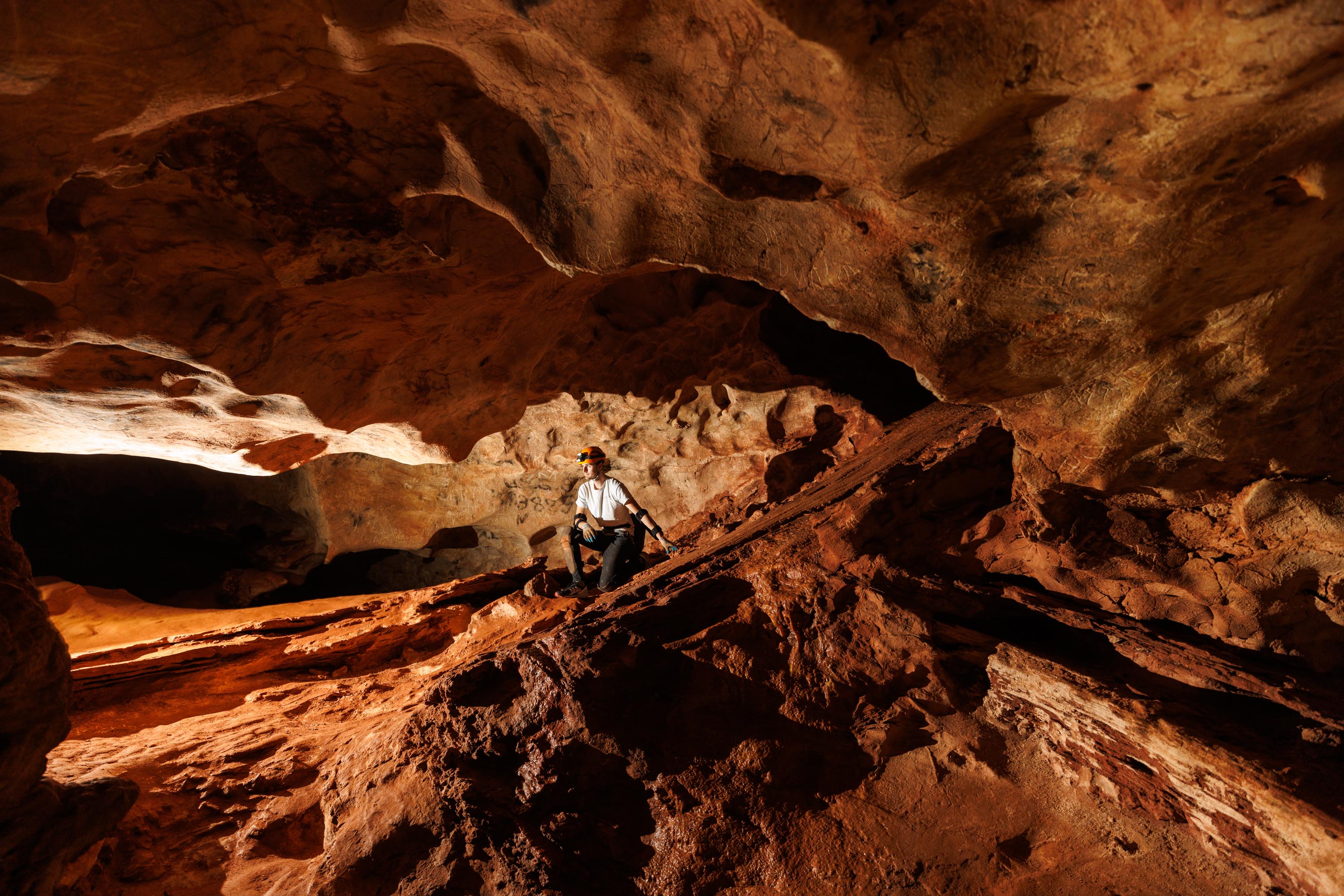
Protecting Your Equipment
My next caving assignment took me to one of the largest cave systems in the US, Natural Bridge Caverns just outside of San Antonio, Texas, for National Geographic. I took one of the wild caving tours, requiring tight squeezes including the “birthing canal” which was only 16” tall and about 20” wide.
The most challenging part about photographing in this cave was trying to protect my equipment. As I crawled through the wet and humid cave, my clothes and gear were covered in a thin layer of mud. I had prepared for these challenges – I wore gloves while moving through the cave, taking them off when photographing, and keeping my hands and camera clean. I brought a waterproof backpack to keep my camera gear secure and dry.
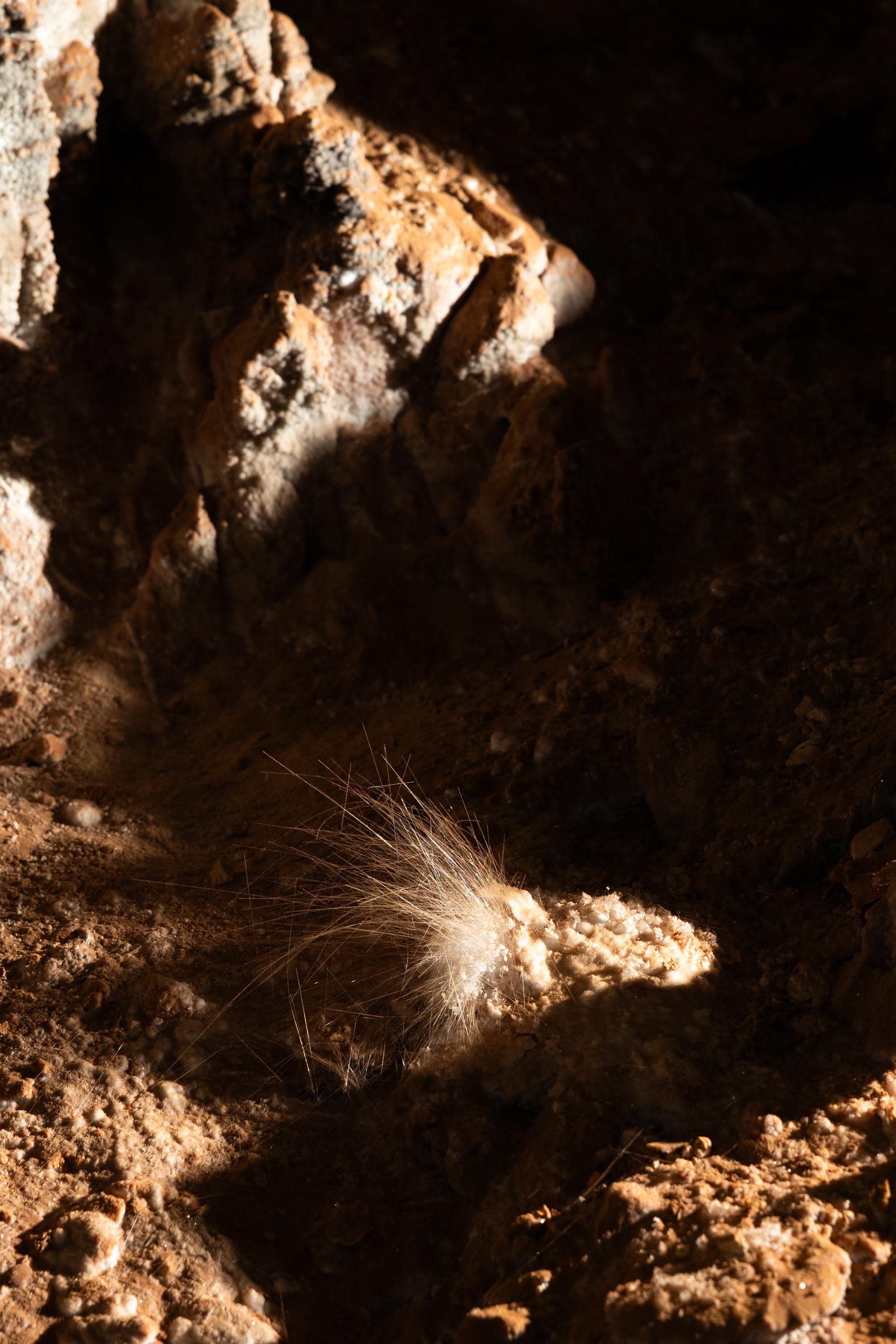
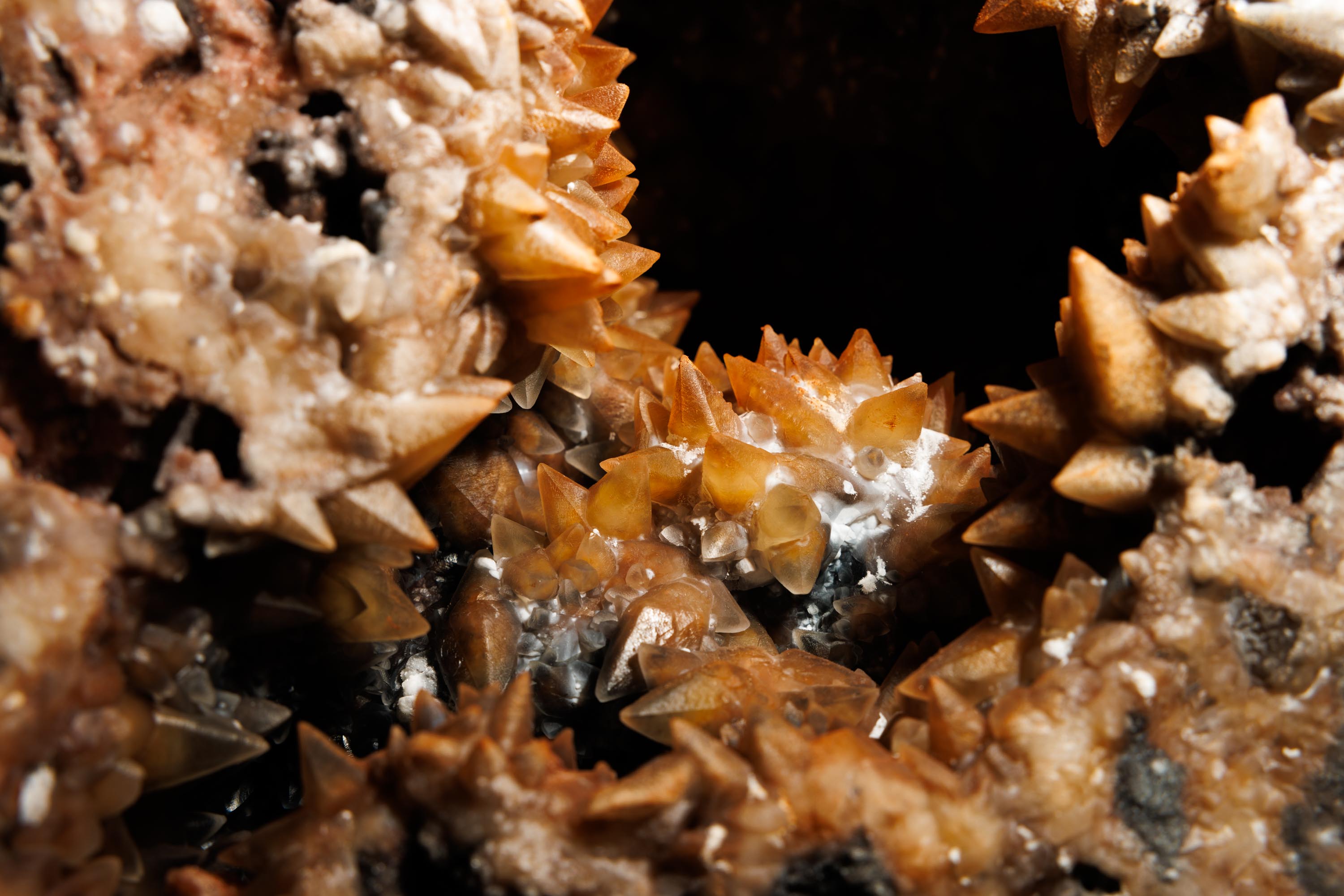
Lenses
Recently, I visited Wind Cave National Park while on assignment for National Geographic for an upcoming book called National Geographic Ultimate National Parks. This is a really unique cave system because of countless small features like beautiful mineral deposits and perfectly preserved fossils. One of the mineral features was a small gypsum formation. It looked like a small white fuzzy ball with hair-like tendrils coming out of it. I knew the cave system was complex and we would be crawling, climbing, and hiking for hours, so I only brought my Canon RF 24-70mm f/2.8L and my nifty fifty, Canon 50mm f1/4 lenses to save weight. The golf-ball-sized gypsum formation was so delicate that you couldn’t get within 6 feet of it, go any closer and your breath could damage it. I wished I’d brought my Canon 70-200mm F2.8 so I could get more detail in the image and avoid cropping in post-production, I learned that it’s important to bring a lens kit with a wide range. You want lenses that can not only help you show the expanse of a cave system, but also its fascinating and intriguing details.
Safety
Lastly, don’t forget that safety is key when caving. Caves can be very dangerous. If anything happens, you can be a long way from help, and getting an injured person out of a cave is challenging. Bring extra supplies, and a first aid kit, and consider going with a guide until you’re versed in caving. The preparation and safety can be cumbersome, but creating beautiful images of caves and your adventures is worth it. Happy caving!
Related Reading
- How Sports Leagues Build Out Elaborate Instant Replay Systems
- A Comprehensive Guide to Aerial Photography
- Shooting Anamorphic on the RED V-Raptor
- Sensor Format Size and Image Quality
